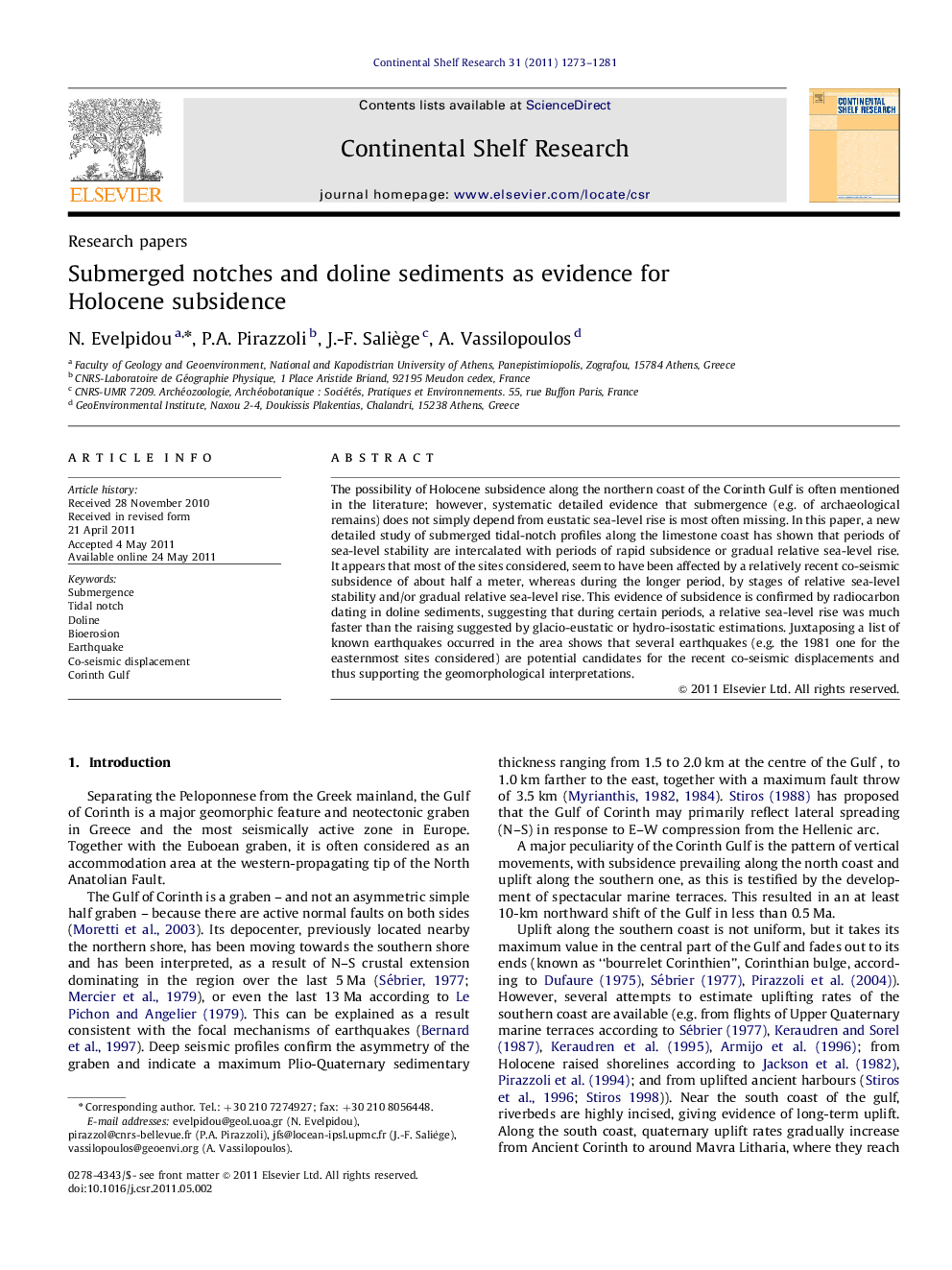| Article ID | Journal | Published Year | Pages | File Type |
|---|---|---|---|---|
| 4532588 | Continental Shelf Research | 2011 | 9 Pages |
The possibility of Holocene subsidence along the northern coast of the Corinth Gulf is often mentioned in the literature; however, systematic detailed evidence that submergence (e.g. of archaeological remains) does not simply depend from eustatic sea-level rise is most often missing. In this paper, a new detailed study of submerged tidal-notch profiles along the limestone coast has shown that periods of sea-level stability are intercalated with periods of rapid subsidence or gradual relative sea-level rise. It appears that most of the sites considered, seem to have been affected by a relatively recent co-seismic subsidence of about half a meter, whereas during the longer period, by stages of relative sea-level stability and/or gradual relative sea-level rise. This evidence of subsidence is confirmed by radiocarbon dating in doline sediments, suggesting that during certain periods, a relative sea-level rise was much faster than the raising suggested by glacio-eustatic or hydro-isostatic estimations. Juxtaposing a list of known earthquakes occurred in the area shows that several earthquakes (e.g. the 1981 one for the easternmost sites considered) are potential candidates for the recent co-seismic displacements and thus supporting the geomorphological interpretations.
► All the northern coast of the Gulf of Corinth is affected by tectonic subsidence. ► Subsidence contributed to archaeological and shorelines remains submergence. ► Contrary to the south coast of the gulf, there is no evidence of uplift. ► The subsidence rate is variable in space and time. ► There has been a relatively recent co-seismic subsidence of the order of 0.5 m.
